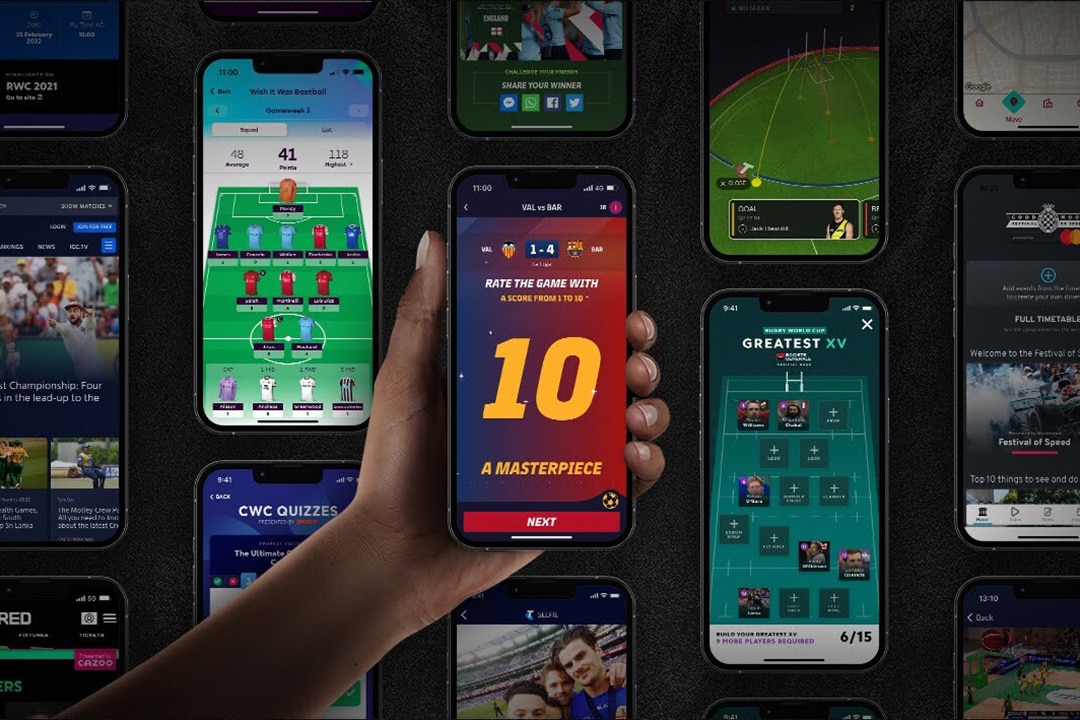Cutting Edge
We Are Ready to Eliminate the Regional Disparities in Education and Encourage the Individually-Optimized Learning
Dec 18, 2020

As epitomized by the term VUCA, post-coronavirus society will be filled with greater uncertainty and ambiguity than ever before. Sony Global Education, Inc., is a company attempting to intrepidly take a deep dive into the quality of education and the learning environment surrounding our children who will be forced to go through their lives in such an era. We spoke to Eisuke SAKAI, who is developing an online teaching platform and Hiroaki IMAGAWA, who is conducting empirical studies in AI-based learning.
Profile
-
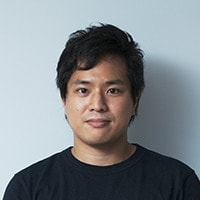
Eisuke Sakai
Mid- and Long-Term Planning Department
Sony Global Education, Inc. -
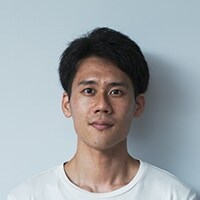
Hiroaki Imagawa
Mid- and Long-Term Planning Department
Sony Global Education, Inc.
Our focus is on Creativity and Diversity
──What were the issues and the prevailing situations perceived, which led to the launch of Sony Global Education, Inc. (hereinafter SGED)?
Eisuke Sakai:The company was founded in April 2015 and I joined in January 2016, so I can only give you my interpretations of the ideas that led to the launch of SGED.
The term and concept of STEM education did not necessarily underlie the founding of SGED. Despite the increasing speed at which every aspect of life had been revolving, education, especially in Japan, was still focused on putting pen to paper and we were keenly aware that we were being left behind. In response, we felt we should solve problems using technology and make more changes to education, which I understand, led to the founding of SGED.

──Is SGED advocating STEM (Science, Technology, Engineering, and Mathematics)? or STEAM (STEM + Arts (Liberal Arts, Fine Arts)?
Sakai:Definitely, STEAM. A also embraces a sense of fun, which is an extremely important element.
──I think that is very typical of Sony. What distinguishes the underlying philosophy of SGED and the approaches taken by SGED toward STEAM education?
Sakai:It’s exactly our awareness of A and our focus on diversity that distinguishes us. For example, our core product, KOOV, is a programming kit to nurture creativity. In the future, we will need to address problems that have no definite answers as well as problems like “1+1=2” that have a single answer. The ability to define the problem by ourselves and to solve the problem by cooperating with the ones around us will become essential. To this end, we believe that creativity and diversity are indispensable and we hope that we can provide content and programs that will develop such capabilities.
Another point is that being a member of the Sony Group, we value the pursuit of fun. When we think of education, we usually get the impression of it being something serious but here we embrace the concept of having fun and having a blast while learning outside of the box.
Hiroaki Imagawa:Another point that I would like to add is we also cherish emotion, which is a part of Sony’s Purpose. We always keep in mind the word, emotion, when coming up with services and content. Also, when we say we nurture creativity, we are referring more to an attitude rather than a skill. I believe that a unique feature of SGED is our desire to nurture an attitude of proactively tackling issues.
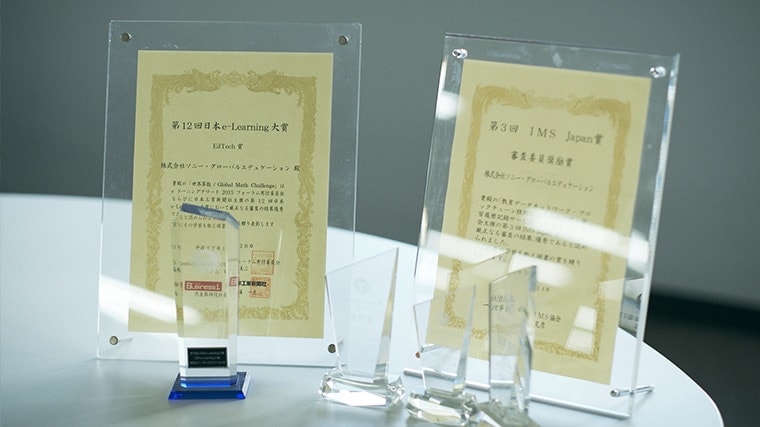
An extension of the concept of things and STEAM education
──Are there any upsides which have materialized due to the emergence of such frameworks as STEM and STEAM?
Sakai:When the maker movement emerged in the early 2010s, an environment was put in place where anybody could easily make anything and a flow emerged which believed that education would be tantamount to manufacturing (making things). Manufacturing (making things) entails a lot of learning and I imagine that, as STEM was thought to be an indispensable element in manufacturing (making things), the framework of STEM gradually emerged.
Students often ask, “Why do we have to learn math or history?” In such cases, I think it’s a shame that we haven’t been able to arouse their interest or to communicate the significance of learning. In this sense, the upside of STEM and STEAM is that they both have the clear-cut output of manufacturing (making things), which makes it easier to communicate their significance and to arouse the student’s motivation to learn. By indicating, “If you learn this, you will be able to make that,” it will make it easier for the students to build a concrete image, such as “Then, I want to make something like this,” which, in turn, will serve as a guide for each student to learn proactively.
Imagawa:STEM and STEAM are also terms that helped to break down the barriers between the various disciplines. Previously, for example, history was taught as history, i.e. as a separate and independent discipline, from the standpoint of instruction and acquiring knowledge. However, thanks to the emergence of STEM and STEAM, we are more open toward learning multiple disciplines in an integrated manner and utilizing them to solve social issues, which I think is crucial.
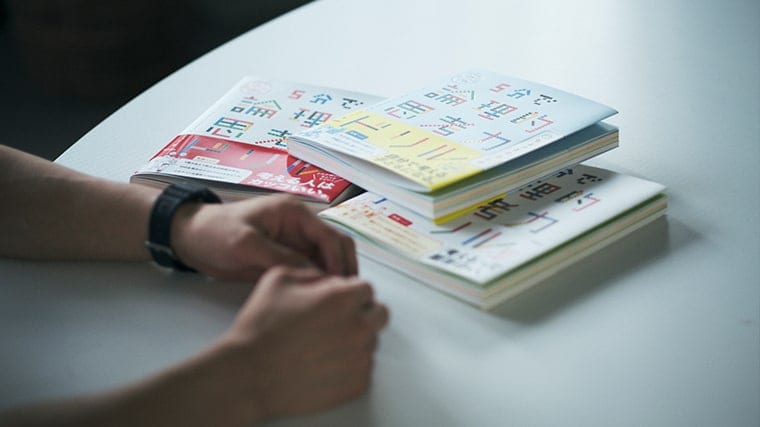
Sakai:Compared to some time ago, I think that the concept of things has gotten quite expansive. Things are no longer limited to tangible things and we now consider services and systems contained on the screen, such as SNS and video streaming services, as things. If you have a computer, you can make these services. So, compared to the age where you couldn’t make anything without a factory, manufacturing (making things) has grown closer and become more embedded in our lives. And I believe that it is essential that we learn how to make these things in order to carry on our lives.
An End-to-End Platform is required
──Please tell us about the online teaching platform currently being developed by SGED.
Sakai:When we interviewed a certain test-prep school, we were made aware of the problem of disparities in all aspects of education between Tokyo and the outlying regions and that this gap was difficult to bridge. As a function to solve this problem, we came up with the development of services offering remote teaching that would fill in this gap between the regions. This was launched as a new business in the fall of 2019, and in the beginning, we never imagined that the need for remote teaching would increase so quickly.
At first, we considered developing the platform on our own but the outbreak of COVID-19 was met with an explosion in demand for such classes and speed became an essential element. So, after searching for a partner, we decided to collaborate with the Chinese platform EEO.
──Specifically, what kind of platform does EEO offer?
Sakai:It might be easier if you imagined an educational version of a web conferencing system. The platform connects the teacher and the students online while letting them see each other’s faces. And they can watch each other’s faces while using the whiteboard and displaying materials. When trying to share materials in a standard web conferencing system, the materials might take up the whole screen and you can no longer see the other person’s face or it creates the hassle of having to arrange them in a way that would allow the simultaneous display of the materials and the faces. From the teacher’s perspective, it is extremely important to watch the students’ facial expressions. This is because the teacher gauges the students’ degree of understanding by watching their expressions. In this respect, EEO always displays the students’ faces and there is no hassle of rearranging the screen because it is a platform dedicated to teaching.
We will use that part of technology which conducts classes by connecting the teacher with the student to which we will add class preparation and video-recording after class and offer statistical data on how each student had been behaving, thereby providing schools with an end-to-end platform from preparation to follow-up.

UI image of an online teaching screen (under development)
──Specifically, what phase are you in right now?
Sakai:The service is scheduled to be launched in April 2021, and ahead of this launch, demonstration tests have commenced at multiple educational institutions from October 2020. We plan to improve the product by taking advantage of the feedback from these demonstration tests.
──Did the development process using the EEO platform provide you with any insights?
Sakai:I realized that we have different sensitivities in China and Japan. Because of the massive size of its territory, China’s educational disparities are even more serious than Japan’s. The size of the population is also completely different from that of Japan. Japan and China may be similar up to the point that the teacher from the city remotely teaching the students in the outlying areas, but in China, the classes tend to be large group classes, where anywhere from 30 to 40 students will take a class from a single teacher and thus becoming one-way teaching.
In Japan, on the other hand, large group classes are becoming rarer and test-prep schools promoting individualized coaching are on the rise. This means that we have different needs. EEO is a platform mainly for large group classes and that is why we felt it needed to be tweaked to fit the Japanese market.
──What are the functions and characteristics of the End-to-End Class Platform offered by SGED?
Sakai:As far as pre-class preparation is concerned, for example, the teachers at the test-prep schools want to control that who takes which classes. Therefore, we are developing a function where the teachers can easily keep track of which students have been assigned to which teacher and what type of classes they are taking.
Additionally, the handling of the teaching materials is a particularly important function. The core competence of the test-prep schools, which are our customers, is in their teaching materials they have developed. Therefore, the leaking of teaching materials is a major business risk. Accordingly, we wanted to avoid the situation where everything is shared as a file and anyone can access them though everything is online. However, there is also a seemingly contradictory need to flexibly offer content according to each class. We believe that resolving this dichotomy is crucial. Therefore, achieving access controls, such as visualization of who can access the uploaded files and making only certain classes accessible, is essential for the customers’ business, and we are developing these functions under the label of the Pre-Class functions.
The other function is the Post-Class function. We are aiming to facilitate attendance management, i.e. “Was this student actually in class?” after the class is finished and to gather and analyze data, including “how actively did this student participate in class?” and to be able to provide such data as “the student’s status is this” in an easy-to-comprehend format. The teachers of the test-prep schools need to report on the students’ status to the administrator and the students’ parents. This reporting process is a hard and time-consuming task, and we believe that by providing system support and simplifying this task we can help the teachers find more time to concentrate on their primary task of teaching and instructing.
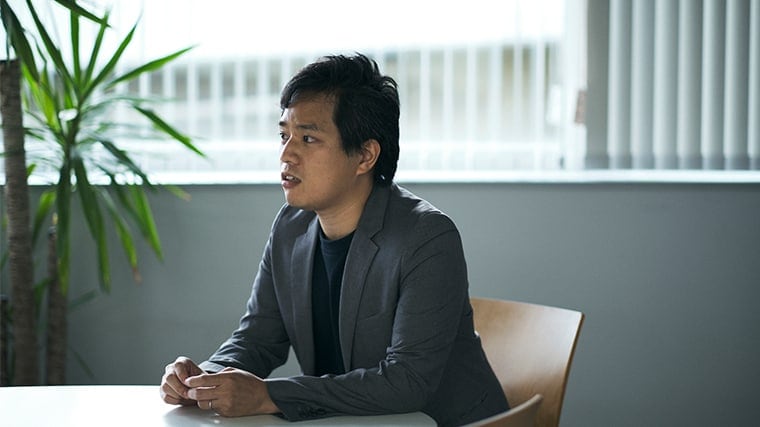
──Going forward, what developments do you have lined up? What kind of services do you want to provide?
Sakai:I hope to proactively utilize Sony’s technology. Sony is focusing on the 3Rs (Reality, Real-time, Remote) but currently remote teaching still falls disappointingly short compared to real teaching in terms of quality and satisfaction. But on the flip side, it also means that it is still full of potential. I believe that many elements can actually surpass reality, for example, emotion analysis using AI, which can gather data that would not be possible in reality. Or we might also be able to enhance further understanding by overlapping information in AR.
I hope these developments grow into services that surpass reality with the power of technology. While these technologies have been fully developed as technology components, we still have a long way to go in studying how to turn them into services. A gap has always existed between technology and services. Moreover, education is a field where there is more than ample room for improvements in terms of technology. In such circumstances, I believe that our activities, i.e. utilizing technology and delivering products that can be easily used by anybody, are necessary as middleware. Sony has long prided itself on its technology and UX. Therefore, it is our desire to create better services by linking technology with UX.
Efficiency for the teachers and individual optimization for the students
──Let’s move on to the Empirical Studies in AI-based Learning which is Mr. Imagawa’s project. What kind of activities are you involved in?
Imagawa:The Empirical Studies in AI-based Learning is an experimental business project of Saitama Prefecture, which began in the previous fiscal year, aiming to bring AI technology to schools. SGED, as a business operator entrusted with this project, has been conducting research through collaborations with the companies of the Sony Group including Sony Computer Science Laboratories, Inc. This empirical study is one of the projects in the Empirical Studies For Implementation of Cutting-edge Technology for Education in a New Era, promoted by the Ministry of Education, Culture, Sports, Science and Technology (MEXT), and in addition to Saitama Prefecture, Kyoto Prefecture, Kagawa Prefecture, Minoh City, and Gifu Prefecture are also involved in their initiatives as part of these studies.
Let me give you a brief overview of the details of the studies. Every year, Saitama Prefecture conducts assessments called The Saitama Prefectural Assessment of Academic Ability (hereinafter Prefecture Academic Assessment) of students from fourth grade through ninth grade. As nearly 300,000 students take this test each year, Saitama Prefecture has accumulated a massive volume of educational data. To date, Saitama Prefecture has analyzed this data from a macro-leaning perspective, reflected the results in its policies, and provided feedback to the schools, and so forth. However, it has not been able to analyze the data with a micro perspective, i.e. from the standpoint of the individual child, and achieving individualized optimizing had been a challenge. Under such circumstances these empirical studies came about as a way of integrating the academic data kept at the schools in addition to the data from the Prefecture Academic Assessments, utilizing AI technology to analyze these data and providing learning suited to each child.
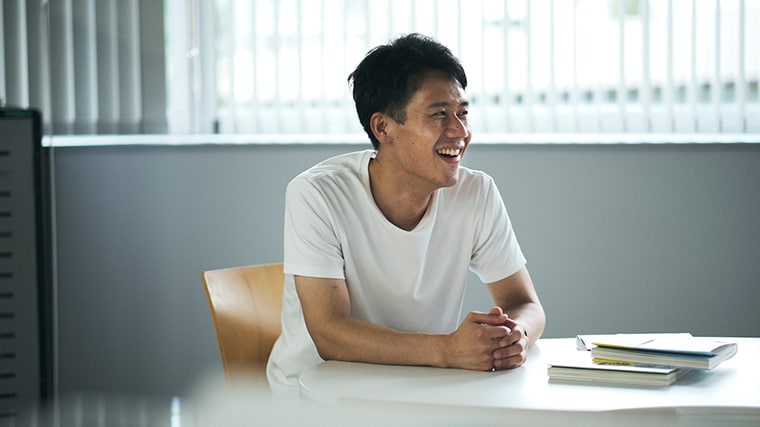
──What kind of role are you playing in this project?
Imagawa:As the project leader, I mainly plan the systems to efficiently accumulate and analyze the data accumulated at schools, which I just described, with as little burden as possible on the teachers onsite. The Prefecture Academic Assessment, which has been highly praised by the education and skills director of OECD, provides outstanding data but as a test that is given only once a year, it tends to be lacking in frequency when we consider individualized optimization in everyday learning. Therefore, we believe that analyzing chronologically-detailed academic data such as the quizzes at school and homework given out, together with the data from the Prefecture Academic Assessment is crucial. However, when trying to analyze such academic data, we are always faced with the challenge that how do we gather such data. The development status of the ICT environment at public schools is nowhere near sufficient and as many of the local governments are lagging behind, paper-culture is still going strong. Nevertheless, if this paper-culture continues, it will make it extremely difficult to accumulate and analyze everyday academic data. This is why we need to implement a system. The growing workload of teachers is a major issue and this is why we want to propose a better system by asking the opinions of the teachers on the type of system that is required through this experimental business project.
Turning our attention to data analysis, we will see that the children are receiving a variety of reports as feedback including the scorecards of the Prefecture Academic Assessment. However, the fact that many children, just by being given these reports, cannot take any concrete actions is another major problem. I’ve been told that some children don’t even read the reports properly and just throw them away. For this reason, we believe we must indicate specific content, i.e., what needs to be done next based on the analysis results. In such cases, we will need to provide a comprehensive infrastructure that not only includes a system capable of accumulating and analyzing data but also indicates content on what to do using the analysis results. And currently, we are exploring what to do with the overall design of such an infrastructure.
──Which phase are you at now?
Imagawa:The duration of these empirical studies has been set at four years and this year we entered our second year. Last year, we received and analyzed the Prefecture Academic Assessment data from Saitama Prefecture, studied analytical methods, and developed an advice prototype based on the analysis. This year, we are at the phase of refining the prototype, studying specific content based on the analysis results, and studying ways of utilizing school data such as test data. We also expect to commence studies on what data other than academic data should be utilized to provide more useful feedback. There is no doubt that academic data such as test results are useful information but there must be other data that we have overlooked which would benefit us as we aim for individualized, optimized learning. For example, if we were to add data on daily habits and the types of cognitive abilities to the analysis, we might be able to provide feedback, such as “For a child who is a morning person and who is the type of person who thinks things through carefully, this type of learning would be suitable.” We are ultimately hoping to provide opportunities for learning in line with the individual rather than merely feeding back right or wrong information.
──Why is MEXT trying to utilize ICT at the schools?
Imagawa:I believe that MEXT aims to provide new types of learning which will be required in the future such as programming and inquiry-based learning and achieving individually-optimized learning by utilizing data thereby ensuring a fair education that leaves no child behind. The latter, i.e. individual optimization, is also the goal for our empirical studies and especially important from the standpoint of public education. However, the impression that I received from the communications with the teachers was that while the teachers were coming up with various ideas to support children who were likely to be left behind, they were not supporting the so-called top or the medium-ranked students as much. Needless to say, there is a limit to how much a single teacher can do in a class of several dozen students but what we need to do is to aim for a place of learning which expands the potential of each student, regardless of academic ability, if we are to pursue fairness, and only after such a goal is achieved can we raise the level of education as a whole.
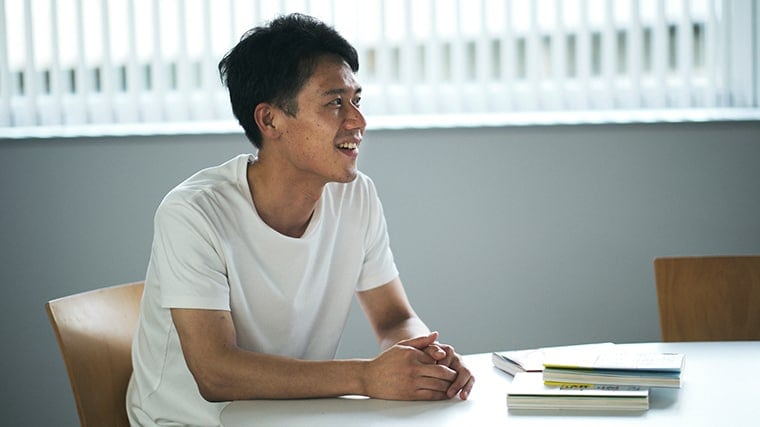
──In dealing with these issues, how do you intend to specifically utilize AI?
Imagawa:Our first step is to analyze the academic data and identify where the child stands, i.e. where he or she is having setbacks as well as what his or her strengths are, and based thereon recommend content that would resolve the setbacks and further develop their strengths. From the perspective of the teacher who is busy preparing homework and grading tests, we hope to develop a system where homework is automatically adjusted and assigned according to how much of the day’s class was understood, and teachers can monitor how the students are handling the homework by logging into the system the following morning, and based on that information the teacher can set up classes for that day.
When preparing homework for summer vacation and other long-term holidays, for examples, it would be possible for the teacher to set perimeters such as problems involving geometric figures in math which can be completed in about two hours, and a workbook would be prepared according to the level of learning of each child and assigned individually. This would not only lessen the burden on the teacher but also create homework suited for each child and with the extra time, the teacher would be able to support each child based on a study of the classes and the data.
──So at the end of summer vacation when the children feel the pressure of finishing their homework and gather to work on it together, they will find that everybody has been assigned different homework.
Imagawa:Yes, exactly. However, the potential problem with this scenario is that the children and the parents may start to complain. For the child, he or she might not want to do homework that is different from the others. And for the parent, they are going to wonder, “Why is my child being singled out?” These are actual complaints that teachers receiving now. Of course, I can sympathize but from the standpoint of providing individual support, it stands to reason that everybody is assigned different homework. Going forward, we need to persevere and patiently work to change their mindsets.
──So, raising awareness of the parents is also crucial.
Imagawa:Yes, definitely. At the moment, we are only assuming providing feedback to the teachers and the children but in our discussions, members of our team have expressed opinions to the effect that we need to also provide parents with useful feedback, which allows them to grasp the status of their children with greater precision. Currently, parents only view report cards and listen to the reports from their children. The information contained in report cards, however, has a rougher granularity and to be honest, there is a limit to what we can learn from report cards. Therefore, we are considering raising the awareness of the parents and deepening their communication with the children by, for example, allowing the parents to also access the system and let them confirm the academic status and what the children are like at school. However, for the children, there might be a few things that they don’t want their parents to see.
──Have you faced barriers from the standpoint of privacy?
Imagawa:We had assumed this problem from the start but we have found that the problem of overcoming the barriers of security and privacy is much greater than we had imagined. The system design will probably be difficult, for example, how will we build a security environment that meets the requirement standards, and how do we reduce personal information risks including the issue of pseudonymization. However, we plan to derive solutions by collaborating with our group companies. Meanwhile, if we are going to have the children also log in, it would be difficult to have them remember complicated login IDs or passwords and the children might show their passwords to each other. We need to take all this into account and comprehensively think about the ease of use and the guarantee of security.

──Going forward, are you planning to incorporate typically-Sony twists and gamification elements?
Imagawa:I hope so. To tell you the truth, though, it might be difficult to reach that stage in the current empirical studies. These empirical studies are aiming for future commercialization. So, once we reach the commercialization phase, I hope we can incorporate content that is typically Sony.
In my personal opinion, there are four things that I would like to personalize in learning and they are What to learn, How to learn, When to learn, and Where to learn. In our current project, I think we will be able to personalize some elements of What to learn and How to learn. However, the When and Where will be quite difficult to accomplish. That is why we believe that in the future, by combining our efforts with the online teaching platform being developed by Mr. Sakai, we will be able to offer a new locus for education which can arrange When, Where, How, and What flexibly and by adding typically-Sony content, we will be able to create a new KANDO (emotional) experience.


